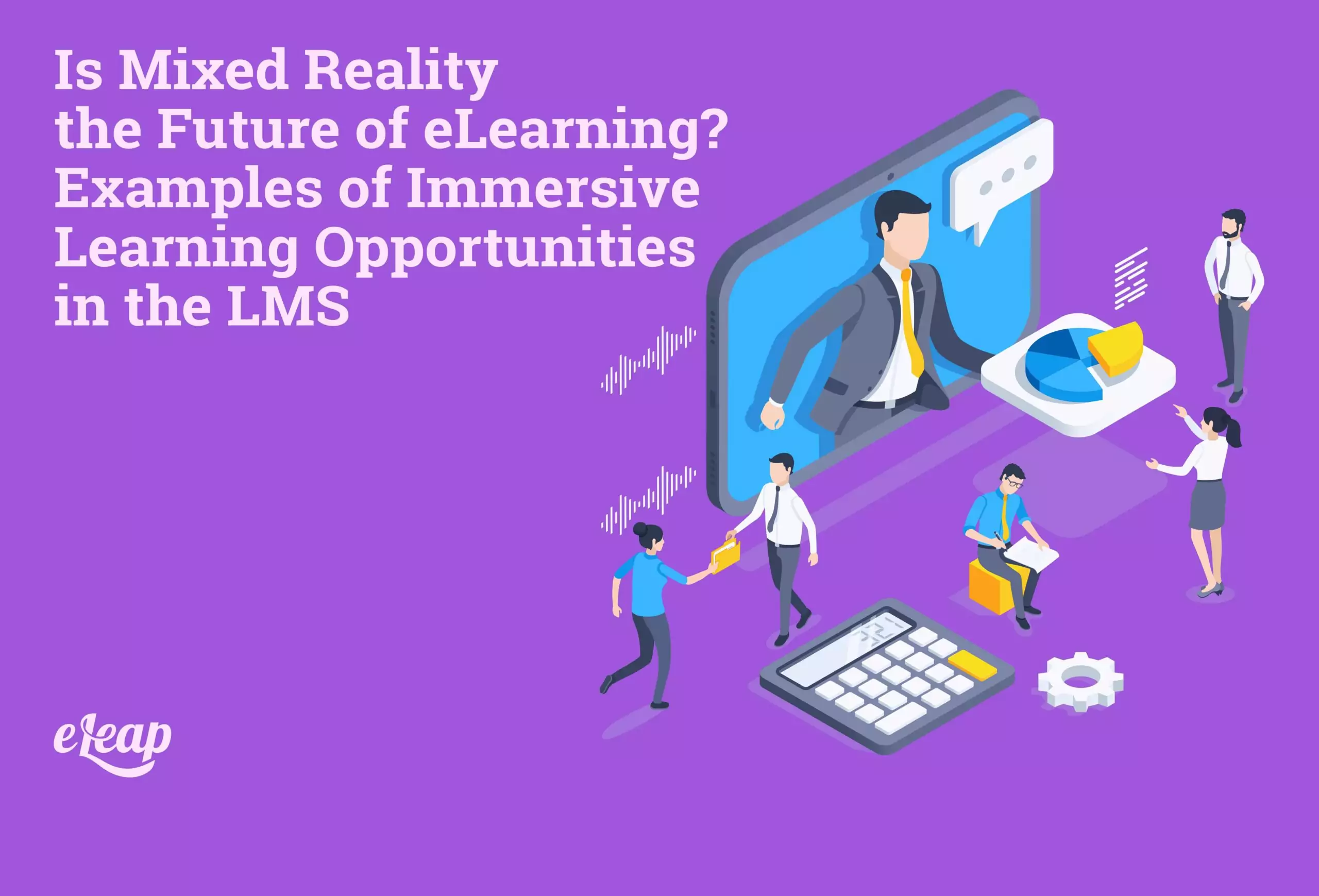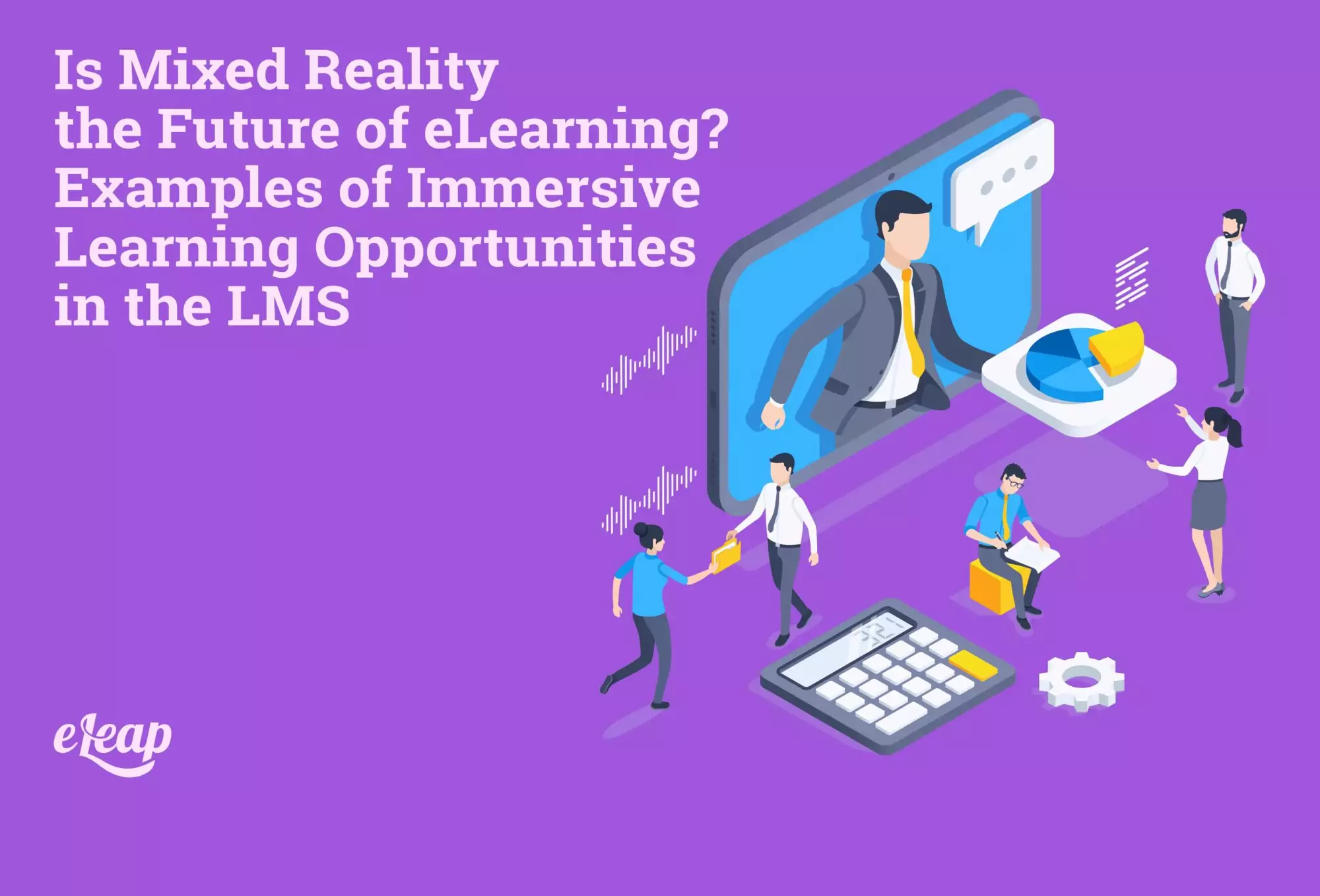Is Mixed Reality the Future of eLearning? Examples of Immersive Learning Opportunities in the LMS

The future of eLearning has evolved with the Internet over time, and companies are seeing that immersive learning platforms create more effective training and learning opportunities, while also improving retention, reducing learning and development costs, and even lowering the risk of the L&D process. Digital platforms make L&D much easier to execute across an organization without sacrificing a small fortune on training and related travel expenses. But is it enough to have an LMS with robust content? Today’s proponents that are leading the way with mixed reality-based L&D initiatives say no.
There’s been plenty of talk about how virtual and augmented reality are changing the virtual learning space. Mixed reality is an offshoot, and as the name suggests, it contains a comprehensive training solution in various forms, including virtual and augmented reality, along with embracing AI and other digital tools.

The Breakthroughs of Mixed Reality for Training and Development
There are several innovations and breakthroughs from the transition to virtual and augmented reality, also known as mixed reality. Put simply, mixed reality (MR) refers to the combining of virtual and real-world environments to create new opportunities for training with environments and visualizations where people can learn and upskill themselves without the expense of hands-on training and development.
Mixed reality also offers enhanced safety for several industries, when it comes to things like heavy equipment training or medical training. People can now practice realistic simulations with real hardware that’s designed to help them perform in the MR environment, no matter what the software or situation might be.
This is helping organizations seek out better ways to train and develop staff in healthcare, engineering and manufacturing, HAZMAT and biohazard-related industries, and other areas where danger and difficulty surround traditional hands-on training methods.
Of course, some augmented reality and automated technology have been in use for a long time. There have been remote-controlled explorers responsible for checking areas for land mines and detonating bombs safely. Imagine how much safer training and development can be on things like this with mixed reality platforms for all the dangerous aspects of the job.
Mixed Reality Is Going Mainstream
Today, mixed reality is being utilized all over the place. Consumers and businesses alike are finding ways to liberate themselves from the screen and interact with our actual (or virtual) environments. Even the AR filters that are used on Instagram are a form of mixed reality, which a lot of people don’t realize. This new reality is changing the way of things in more than just learning and development, but for organizations that are focused on how to incorporate eLearning, it’s a sure bet to include some type of AR.
The advancements in technology now allow environmental inputs to capture body positioning, movements, objects, surfaces, boundaries, sound and lighting, physical locations, and more. The mixed reality environment is designed to embrace all of these elements and utilize computer processing and AI models to create a mixed reality environment that delivers the type of experience desired for the end-user. In this case, it would be employee training and development experiences.
It’s Not All Headsets and Haptic Gloves
While there is hardware out there to make the virtual reality experience more realistic and easier to engage with, that’s not what it’s all about. Yes, VR headsets and other gear are revolutionizing the way that people experience the virtual world. However, there’s a lot more to it than the “cool gadgets.” The environment itself is created in various formats, and as shown with the Instagram filter example, can even be incorporated with mobile learning and development platforms.
Put simply, people can experience mixed reality right on their own smartphones, with the right technology and tools in place. It’s about creating an environment that delivers a better experience for users and organizations alike, and that’s where mixed reality continues to lead the way as a topic of interest for eLearning and development through virtual resources.
Although there are no holographic projections running organizations and people aren’t teleporting to and from the office, mixed reality is getting close to creating an experience where users can interact remotely and still get real-time engagement because of the virtual reality environment that is created. It drives user engagement and in the post-COVID work world, it encourages the continuation of remote teams.
Examples of Virtual and Mixed Reality
Today, tons of companies and organizations utilize virtual and mixed reality platforms and tools to engage with users. This includes employees, for some, including in the aforementioned healthcare industry. Film and TV can also use VR and AR to create new experiences for people, and as the world has seen, many museums and travel destinations have created virtual and mixed reality tours that allow people to travel the world without having to leave home.
Professional sports can also benefit, utilizing digital training programs to help amateur and pro athletes train even when they can’t get to the training camp. And of course, gaming loves all the technology coming from VR and AR because there are tons of great ways to make gaming more realistic with these tools on board.
Work with the Experts
Companies should embrace a mixed reality training environment when they can, and they should do so by working with a team of experts that understands how to incorporate virtual and augmented reality into training and development effectively. They will be familiar with the equipment, the software, and the different solutions available for various organizations today. They will also help organizations determine whether mixed reality is their preferred training platform or just a bonus tool they offer their people to enhance the learning experience.
It’s all about taking advantage of the resources out there to create the best learning and development environment for employees across the board. Fortunately, the tools are out there to enhance the process and deliver more than ever before, including the likes of mixed reality environments to provide a realistic training environment in a real-time digital format.